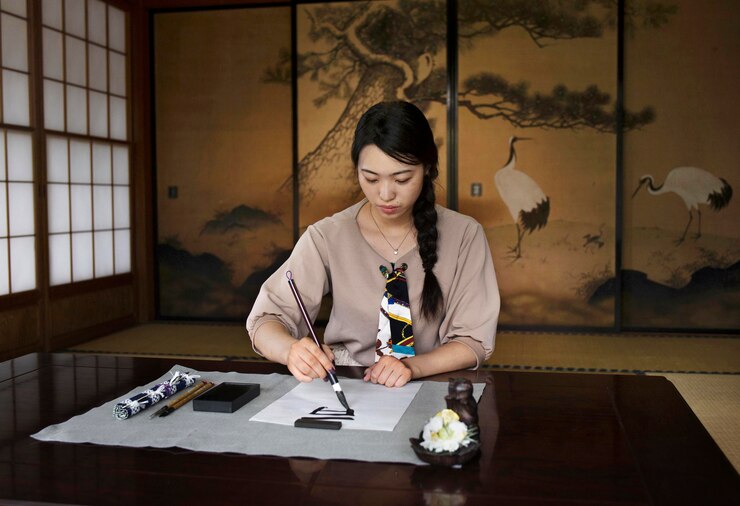Japanese swords are more than mere weapons; they are a profound expression of Japanese culture, history, and artistry. Revered for their beauty, strength, and the skill required to create them, these swords have become iconic symbols of the samurai era. This blog post delves into the intricate world of Japanese swords, exploring their history, craftsmanship, and cultural significance.
The History of Japanese Swords
Japanese swords have a storied past that stretches back over a thousand years. The earliest Japanese swords, known as chokutō, were straight and single-edged, influenced by Chinese sword designs. However, it was during the Heian period (794-1185) that the distinct curved blade, synonymous with Japanese swords, emerged.
The Heian period saw the rise of the samurai class, warriors who would come to dominate Japanese society for centuries. The shift from straight to curved blades improved the swords’ cutting ability, making them more effective in battle. This innovation led to the development of the tachi, a long, curved sword designed for cavalry use.
As the samurai class evolved, so did their swords. The kamakura period (1185-1333) saw the emergence of the katana, a shorter, more versatile weapon that could be worn edge-up, allowing for a quicker draw. The katana’s design became the standard for Japanese swords, embodying the perfect balance of form and function.
The Art of Sword Making
Creating a Japanese sword is an elaborate process that requires immense skill and dedication. The swordsmith begins with tamahagane, a special steel made from iron sand. Tamahagane is unique for its high carbon content, which contributes to the sword’s strength and sharpness.
The swordsmith heats the tamahagane in a charcoal furnace until it reaches a malleable state. This is followed by repeated folding and hammering of the steel. This technique, known as orikaeshi, serves to purify the steel by removing impurities and distributing the carbon evenly. The resulting blade is both incredibly strong and flexible.
Once the blade is shaped, it undergoes yaki-ire, the hardening process. The swordsmith applies a special clay mixture to the blade, leaving the edge thinner than the spine. The blade is then heated and quenched in water. This differential hardening creates a hard, sharp edge and a softer, more flexible spine, giving the sword its distinctive curve.
After hardening, the blade is polished using progressively finer stones. This meticulous process, called togi, can take weeks to complete. The polisher not only sharpens the blade but also brings out the intricate patterns in the steel, known as hamon and hada. The hamon is the visible line created by the hardening process, while the hada is the grain pattern formed by the folding of the steel.
Types of Japanese Swords
While the katana is the most well-known Japanese sword, there are various types, each with its own unique characteristics and uses. Some of the primary types include:
- Tachi: A longer, more curved sword traditionally worn edge-down. It was primarily used by cavalry and was popular before the katana became standard.
- Wakizashi: A shorter sword often paired with the katana, forming the daishō or “big-little” pair. The wakizashi was used for close-quarters combat and as a backup weapon.
- Tantō: A dagger with a single or double-edged blade. It was used as a tool and weapon and often carried by samurai as a sidearm.
- Nodachi: A large, two-handed sword used by foot soldiers to counter cavalry charges. Its length provided greater reach and power in open-field battles.
The Symbolism and Cultural Significance
Japanese swords hold deep cultural significance, embodying the spirit of the samurai. They are not only weapons but also symbols of honour, discipline, and the way of the warrior, or bushidō. The process of forging a sword was considered a sacred act, often accompanied by rituals and prayers.
The katana, in particular, became a symbol of the samurai’s soul. Samurai believed that their swords held their spirit and life force, and they treated them with the utmost respect. The katana’s elegance and deadly efficiency made it a central figure in Japanese martial arts, literature, and folklore.
The Legacy of Japanese Swords
Today, Japanese swords continue to captivate enthusiasts and collectors worldwide. While modern technology has revolutionised weaponry, the traditional methods of Japanese sword making remain revered. Master swordsmiths, known as tosho, still practise the ancient techniques, creating blades that are both functional weapons and exquisite works of art.
The appreciation for Japanese swords extends beyond their martial prowess. Museums and galleries around the world showcase these blades, highlighting their historical and artistic value. Collectors prize authentic Japanese swords for their craftsmanship, history, and the unique beauty of each blade.
Moreover, Japanese swords https://www.truekatana.com/ have influenced various aspects of popular culture. They appear in films, video games, and literature, often symbolising a character’s strength, honour, and mastery. This enduring legacy ensures that the Japanese sword remains an iconic and timeless artifact, celebrated for its unmatched craftsmanship and cultural significance.
Check also: itsreleased.co.uk
Conclusion
The Japanese sword is a testament to human ingenuity, artistry, and the pursuit of perfection. From its early origins to its status as a cultural icon, the journey of the Japanese sword is one of evolution, skill, and deep symbolic meaning. The art of sword making, passed down through generations, continues to be a source of fascination and admiration.
As we reflect on the history and craftsmanship of Japanese swords, we gain insight into the values and traditions that shaped Japanese society. The sword’s legacy endures, reminding us of a time when the blade was not just a weapon, but a reflection of the warrior’s soul and the spirit of an entire culture.


